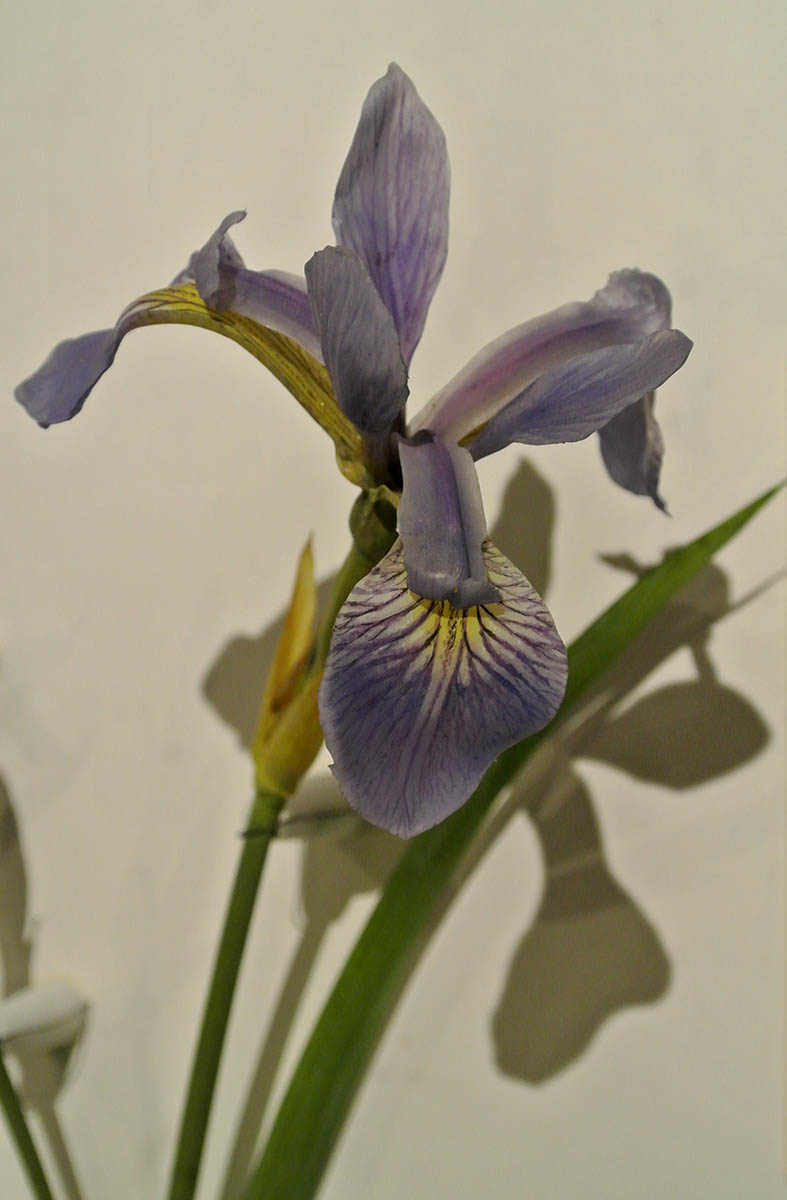Many people know the overwhelming feeling of peace and admiration one experiences overlooking a canyon, snow capped mountains, sunset at the beach or tumbling waterfalls. Our relationship with nature is of all times and ranges from worshiping the gods of nature to overcoming or ‘taming’ it. The relation with nature has been the subject of many great thinkers such as the 18th century philosopher Rousseau who, with his admiration for nature, has had a big influence on our current way of thinking. Our desire for unspoiled nature is today perhaps greater than ever. Every year, millions of people have their holidays (to some indeed ‘holy’ days) in the mountains, which seem to have an enormous appeal to us.

Special ecosystems and lots of variety
The variety of (plant)species in the mountains is very big as a lot of different conditions can be found on a relatively small surface. In a North West European lowland forest one can find particularly forest plants due to different conditions. In the mountains these different conditions and gradients are more extreme, think of: altitude, temperature regimes, PH, moisture, soil types, snow coverage, nutrients sunlight etc. The result is a great balanced ecosystem with many different habitats and species.
It is not rare, to experience the grandeur of the mountain scenery during a walk when suddenly a little further, you hear a splashing waterfall and find yourself in front of a vertical cliff filled with rare flowers of Saxifraga, Sempervivum and Ferns; the most beautiful garden on a few square meter! Can we have some of this experience in our Gardens? Let’s have a look at the how we have dealt with this till now?
History of the Rock Garden
Although rocks were already used in Chinese gardens it was in the English landscape gardens that the grotto (rock cave) was introduced. As a reminder to pristine nature, which in those days was right in the spotlight. It was the time of exploring the remote corners of the world, exploring exotic places, but also, for example the Alps. There were also special plants and animals that were brought back to zoos and botanical gardens. Since the late 18th century, rock gardens were laid out and were on display (first one 1772 in London). This was mainly to create an artificial habitat for the plant collections brought back from the mountains, not to experience the feeling of the mountains! Later, local large angular limestone blocks were used to build these gardens and slowly the ‘English Rock Garden’ came into existence as can still be found in Kew Gardens. Around 1900 rock gardens were very popular, especially because Reginald Farrer brought back new species from the Himalayas and China. During an international plant exhibition of the Royal Horticultural Society (RHS) in 1912 Farrer showed a natural rock garden he built himself. This was actually the start of the continuing interest in rock gardens today by enthusiasts worldwide.

Alpine flowers in our gardens
Over the years, a variety of possibilities were created to grow Alpine plants in our gardens. This varies from the English rock garden, alpine houses, Czech crevice gardens, tufa gardens, using troughs, rubble gardens (rubble instead of rock), artificial and natural stone walls, raised beds and even refrigerated benches. Often this is mainly for genera, which are more difficult to grow as they often need moisture but good drainage, cool root systems but sun! Interestingly many of our perennials, shrubs and bulbs used in our gardens right now, grow naturally in mountain regions of the world think of plants like Bergenia, Buxus and Tulips
Garden secrets
So there are ways to make artificial habitats for a collection of alpine plants. The question now is, can we create the experience of the mountains in our garden. The total effect of plants, rocks and water together! In fact this is not an easy question to answer as I think it touches the core of what garden design & landscape architecture is about. In this respect, a Japanese garden is very interesting! Rocks as islands in the sea (gravel), smoothly pruned Azaleas as rolling hills in the Japanese landscape and so on. The Japanese garden is actually a translation of the local landscape! Which reminds me of William Blake’s poem ‘To see the world in a grain of sand, And a heaven in a wildflower, Hold infinity in the palm of your hand and eternity in an hour!
Also very telling is the quest of the renowned landscape architect John Ormsbee Simonds. With fellow students he had spent years looking for the essentials of the world’s famous gardens in Japan, China, Tuscany, France, England and so on. What are the secrets of all these gardens? Was it just the lay out, the geometry, order, unity and intricacy or is there more? Somehow they felt the essence of what it was seemed to escape them. Many years later when he sat in a woodland, as he describes it; sunlit trees, motionless air fragrant with Hay fern, purple foliage, squirrels searching for acorns….’an old familiar tingling went through me, a sense of supreme well being, and an indefinable something more’…. It gave him the same feeling as he had felt in some of the gardens, years earlier. It was not the design of the gardens but rather what one experiences there what was the secret! A special garden is not merely ‘an exercise in geometric acrobatics’ but, like in the mountains, an experience or feeling that the garden evokes.

Experience the mountains in your garden
It is precisely this experience of the mountains that Ber Slangen in Maastricht tried to take home in 1950 when he cycled to the Alps. Without a preconceived design he tried to create some of experiences of the Alps in his garden. A small magical landscape was created with rocks, plants and water. Several species of evergreen give depth of field and make it a special and harmonious place. Streamlets and waterfalls come from little gorges and water tumbles over rocks finding it’s way to the central pond in the garden. Vertical cliffs are covered with ferns, Epimediums, Solomon’s Seal and other interesting plants like Ramonda, and Haberlea. Large groups of one genus are used which gives some unity but also provides a background for a few solitary gems! The overall effect of the garden has always been a priority to the plants used. It didn’t matter if this effect was achieved by planting local easy growing ferns or endemic choice species, as long as the overall effect, which is the feeling of the mountains, was there. Vertical green cliffs are great to help to reach this effect. French botanist Patrick Blanc’s green walls are fine examples of this and have added new possibilities in the urban landscape to experience nature in our urban areas or at least try to plan for it. As Simonds describes it: ‘A garden, perhaps the highest most difficult art form, is best conceived as a series of planned relationships of human to human, human to structure, and human to some facet or facets of nature, such as the lichen-encrusted tree bole of an ancient ginkgo tree, a sprightly sun flecked magnolia clump, a trickle of water, a foaming cascade, a pool, a collection of rare tree peonies, or a New Hamshire upland meadow view’.

Although I love travelling and experience the beauty of pristine nature I still would like to end with Ber Slangen’s favourite quote by Italian writer Alberto Moravia. “And those nature lovers should not only decide to travel to Italy or remote areas to refresh their minds with it’s natural beauty. Those who have an eye for beauty can be endlessly happy in their back yard gardens” (Alberto Moravia, De Tijd, May 25, 1984)
References
Simonds O. John, Landscape Architecture: The shaping of man’s natural environment, New York, Toronto, London, 1961
Facebook page Rock Garden Ber Slangen
http://www.flickr.com/photos/91778959@N00



